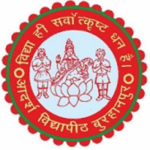Class 10 Social Science (Nationalism in India)
- Course level: Intermediate
-
Share:
- Categories Class 10
- Total Enrolled 1
- Last Update August 17, 2021
Description
Nationalism in India
Mahatma Gandhi returned to India in 1915 from South Africa. Gandhiji’s novel method of mass agitation is know as ‘Satyagraha’. Satyagraha emphasized truth. Gandhiji believed that if the cause is true, if the struggle is against injustice, then physical force was not necessary to fight the oppressor. A satyagrahi can win the battle through non-violence. People, including oppressors, had to be persuaded to see the truth. Truth was bound to ultimately triumph.
In India the first was at Champaran in 1916 to inspire plantation workers to struggle against oppressive plantation system. In 1917 Satyagraha at Kheda to support peasants.
In India, the growth of modem nationalism is intimately connected with anti-colonial movement. The sense of being oppressed under colonial rule provided a shared bond and united people of different groups together. The Congress under Mahatma Gandhi forged these groups together within one movement.
Indian nationalism which made its beginning in the later half of 19th century was strengthened in the first decade of 20th century and grew into the national movement with the Non-Cooperation and Civil Disobedience Movements.
Topics for this course
Nationalism in India
The First World War
Emergence of Gandhiji and ideas of Satyagraha
Non-Cooperation Movement
The Salt March and Civil Disobedience Movement
Other important aspects of this movement
Important Terms And Concepts
Question Answers
Question 1
Question 2
Question 3
Question 4
Question 5
Question 6
Test 1
Nationalism in India
Test 2
Nationalism in India
Test 3
Nationalism in India
About the instructor
130 Courses
58 students


